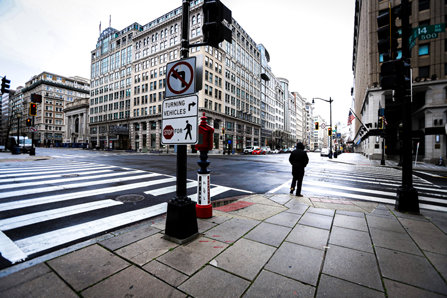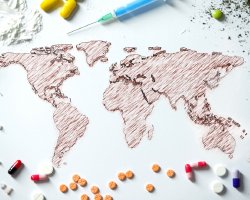
2020 Drug Use Report—What We Can Learn from Studying a Global Problem
Drug addiction is growing in the United States, and it's growing across the world, too. Every year, the United Nations Office on Drugs and Crime releases a world report, a document that highlights drug-related issues across the planet.
While the reality of the drug problem can sometimes seem far away, understanding the growing prevalence of addiction and drug use in our world tells us that the drug crisis can strike far closer to home than we might think.
Global Drug Use Trends Reported on by the UNODC
This year, the United Nations Office on Drugs and Crime released a World Drug Report, a thorough and extensive document outlining drug abuse, drug trafficking, and drug addiction in the world. The report was presented in six separate booklets. Each booklet focused on a different aspect of the global drug crisis, from the drug production/supply chain to the socioeconomic conditions associated with drug addiction in various countries.
For context, here are some of the rising trends regarding the drug crisis that were discussed in the report:
In 2018, about 269 million people abused drugs worldwide, about 30 percent more than in 2009. The number of people who use drugs on the planet represents about four percent of the entire world population.

The report also discussed the effects of COVID-19 on the drug crisis, indicating that global economic problems will push more people, especially disadvantaged people, towards drugs either as a coping mechanism (by using drugs) or to earn money (by selling drugs). Quoting UNODC Executive Director Ghada Waly, “Vulnerable and marginalized groups, youth, women and the poor pay the price for the world drug problem. The COVID-19 crisis and economic downturn threaten to compound drug dangers further still, when our health and social systems have been brought to the brink and our societies are struggling to cope. We need all governments to show greater solidarity and provide support, to developing countries most of all, to tackle illicit drug trafficking and offer evidence-based services for drug use disorders and related diseases, so we can achieve the Sustainable Development Goals, promote justice, and leave no one behind.”
“Vulnerable and marginalized groups, youth, women and the poor pay the price for the world drug problem… We need all governments to show greater solidarity and provide support, to developing countries most of all, to tackle illicit drug trafficking and offer evidence-based services for drug use disorders and related diseases...”
As for global drug deaths, opioids have skyrocketed much higher than other substances for total lives claimed. And this problem is growing worse each year. In the past decade, opioid deaths jumped 71 percent in total, representing a 91 percent increase among women and a 63 percent increase among men.
The report also touched on the legalization of cannabis. As more countries and local governments legalize cannabis, the use of the drug skyrockets. About 192 million people use cannabis worldwide. When a state or country legalizes cannabis, this immediately leads to an increase in use. It also leads to an increase in the use of more potent cannabis products or synthetic cannabis products. And despite growing legalization and decriminalization, cannabis is still the number one drug for putting people into contact with the criminal justice system. Such an event can change a person’s life forever.
On a socioeconomic level, the report concluded that factors such as poverty, limited education, and social marginalization are significant factors in increasing an individual’s risk for misusing drugs. Furthermore, those same factors also make it more difficult for such individuals to receive drug addiction treatment.
Finally, a strong warning came from the 2020 report, indicating that how governments respond to the drug crisis amidst the COVID-19 pandemic will greatly determine results. For example, if governments react much as they did during the 2008 economic crisis, the drug crisis will only get much, much worse. (Following the 2008 crisis, much of the funding for drug treatment and intervention programs was cut.)
Global Trends are Also Local Problems
When reading through global reports and even national study material on the drug crisis, it’s easy enough to get the idea that, “Well, that’s all very sad, but there’s no way those types of issues are happening in my community or in my household.” Yet the truth is, such problems are occurring in virtually every community in the world, certainly in the United States and most developed countries.
According to the U.N. report, more young people are using drugs, and drug use trends are growing in urban and rural areas. People are experiencing increasing access to drugs, and drugs are becoming increasingly legal/decriminalized (especially marijuana).
This means that all across the world, the drug problem is growing. And not only is this a global problem, but the global statistics reported by the U.N. come from nations, states, cities, counties, and even small rural communities. Because this is a problem that affects all of us, that means it’s a problem we all must work to address.
Addiction Treatment—The Answer to the Global Drug Epidemic
The UNODC released a drug report in 2019 as well. It does so every year. In that report, the critical, key point enforced the most throughout the report was the stark lack of addiction treatment in the world. According to that report, only one in seven people who need addiction treatment ever receive it. What that means is that the drug problem is growing much faster than it is being treated.
That’s very concerning because addiction treatment is the single most effective way to help someone get off of drugs for good. When an addict is treated, he or she can address the underlying causes of their addiction. They can fully overcome their problem because they can tackle the aspects of their physical, mental, psychological, spiritual, emotional, and behavioral health that is severely affected by the addiction.
Addiction is not something most addicts can overcome on their own. And while the state of the world as far as drugs go is extremely concerning, there is a workable solution to addiction. If you know someone addicted to drugs and alcohol, please do your best to get them help.
Addiction is a life or death crisis, but rehabilitation programs are here to help reverse the decline and ensure that addiction is not a death sentence. Call Narconon today to take the first step to get your loved one help.
Sources:
- https://wdr.unodc.org/wdr2020/en/index.html
- https://www.unodc.org/unodc/press/releases/2020/June/media-advisory---global-launch-of-the-2020-world-drug-report.html


 ®
®